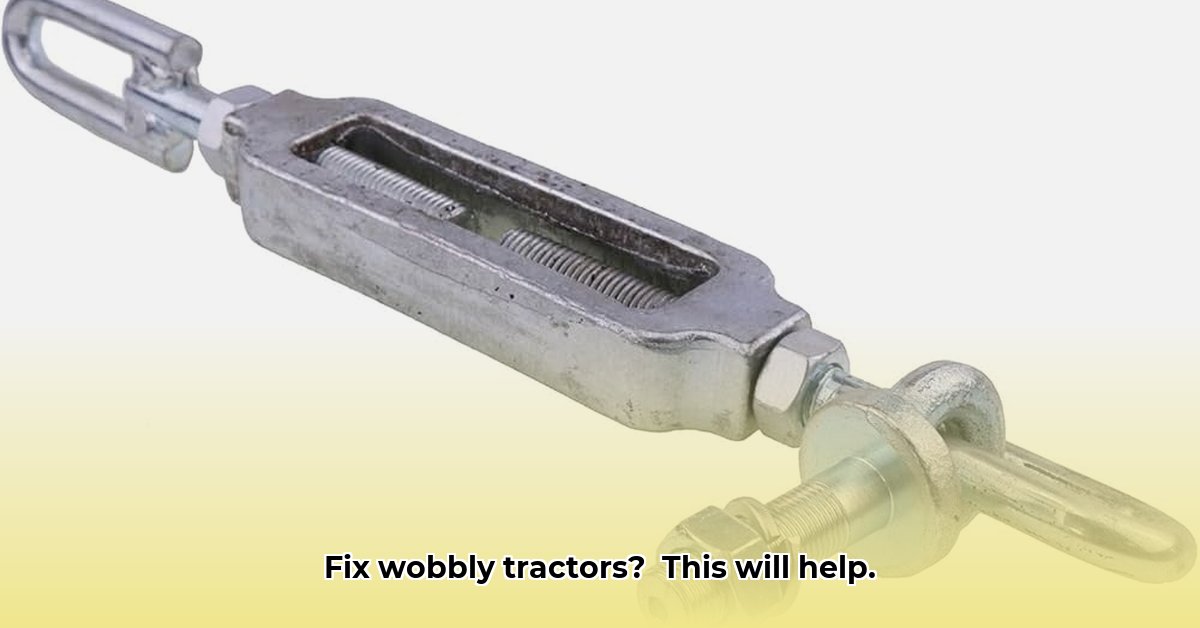
Understanding Tractor Stabilizer Turnbuckles: Function and Importance
Tractor stabilizer turnbuckles (also known as 3-point hitch stabilizers) are critical components ensuring your tractor's implements remain level and stable, regardless of terrain. This stability translates to smoother operation, reduced equipment wear, and increased productivity. A properly functioning turnbuckle minimizes bouncing and vibration, leading to a safer and more efficient farming experience. Do you want to avoid costly repairs and potential accidents? Understanding and maintaining your turnbuckle is key.
Common Problems with Tractor Stabilizer Turnbuckles
Over time, even the most durable turnbuckles can encounter issues. Several common problems signal the need for attention:
- Loose or Worn Connections: Loose or worn connections result in instability, excess vibration, and a less-than-smooth ride, potentially impacting your work quality.
- Improper Adjustment: Incorrect adjustment prevents implements from maintaining the optimal level, leading to uneven operation and increased wear on your equipment.
- Damaged Threads: Stripped or damaged threads render the turnbuckle unusable, necessitating a replacement.
- Rust and Corrosion: Exposure to moisture can cause rust and corrosion, weakening the turnbuckle and compromising its structural integrity. Is your tractor exposed to harsh weather conditions? Regular inspection is vital.
Regular Maintenance: A Preventative Approach
Proactive maintenance significantly extends the lifespan of your turnbuckle and prevents unexpected breakdowns. Incorporate this simple routine into your regular tractor maintenance schedule:
- Visual Inspection: Conduct a thorough visual check, looking for bends, cracks, excessive rust, or frayed threads. Early detection is crucial.
- Connection Assessment: Evaluate all connections for tightness and security. Loose components indicate potential problems.
- Functionality Test: Verify the turnbuckle rotates smoothly without binding. Stiffness or resistance points to an underlying issue.
- Length Verification: Check the turnbuckle length against your owner's manual specifications. Significant deviations may require adjustment or replacement.
Troubleshooting and Repair: A Step-by-Step Guide
If your inspection reveals problems, determine whether a simple fix or full replacement is necessary. Minor surface rust can often be addressed with a wire brush and anti-rust paint. However, severely damaged threads necessitate a complete replacement.
Replacing a Turnbuckle:
- Safety First: Always disconnect the tractor's PTO, switch off the ignition, and use wheel chocks for secure stabilization.
- Disassembly: Carefully detach the stabilizer links connecting the turnbuckle to the system. Take photos for reference.
- Replacement: Install the new turnbuckle, ensuring correct orientation. Refer to your owner's manual for guidance.
- Reconnection: Reattach the stabilizer links, ensuring tight and secure connections.
- Adjustment: Adjust the turnbuckle to the manufacturer's specifications, ensuring optimal stability.
Preventing Future Issues: Best Practices
Preventive maintenance significantly impacts the longevity of your tractor stabilizer turnbuckle. Follow these guidelines:
- Regular Cleaning: Regularly clean away dirt, mud, and debris to prevent corrosion and maintain functionality.
- Consistent Lubrication: Apply a suitable lubricant to the threads to minimize friction and extend the component's lifespan.
- Scheduled Inspections: Make inspecting your turnbuckle part of your pre-operation routine to detect and address minor issues before they escalate.
By understanding and implementing these maintenance strategies, you'll guarantee a longer lifespan for your turnbuckle, leading to safer and more productive tractor operation. Remember, proactive maintenance is more cost-effective than costly repairs.